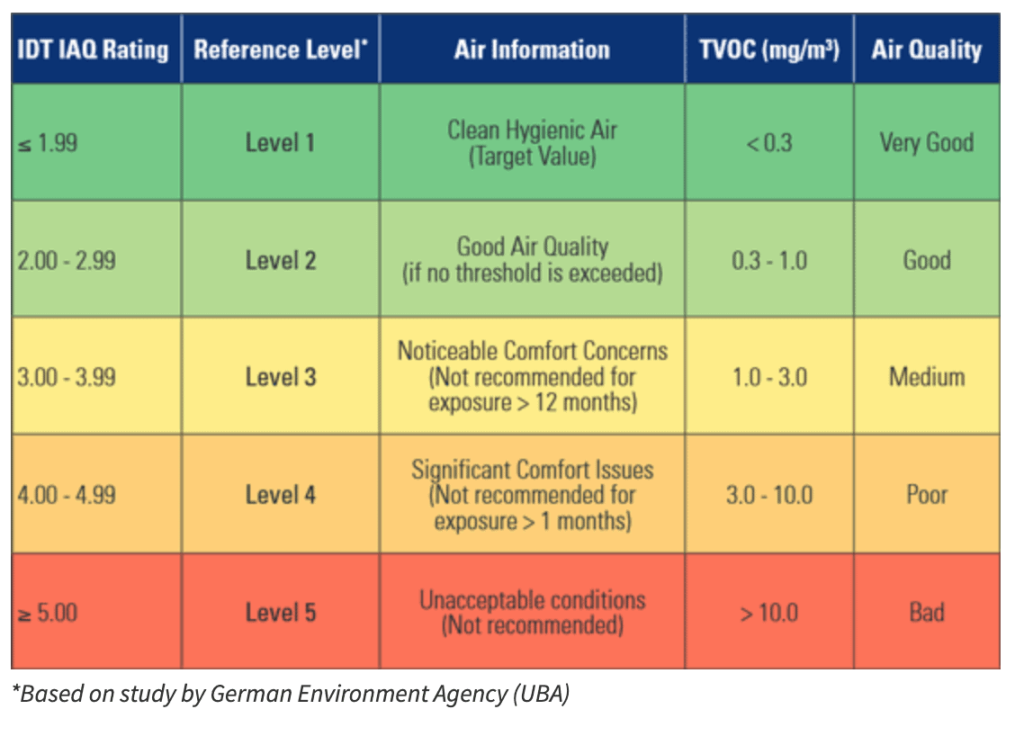The Mayor of London’s Office has funded a study recently, which shows that children travelling to primary schools across London are five times more exposed to air pollution than at any other time of the day. The poor air quality of outside air highlights the vital importance of establishing proper Indoor Air Quality (IAQ) measurers and effective enforcement.
IAQ Ratings and Levels:

Monitoring indoor air quality (IAQ) has become much more popular in recent years. While we have had the ability to measure humidity and temperature, we have not been able to provide basic information about levels of Volatile Organic Compounds (VOCs) around us. There are many different VOC gases that originate from a variety of sources, including chemicals used in cleaners, preservatives in furniture, cooking, and odors from personal care products and the human body.
Data collected from Google Street View Cars, gives an insight into London’s air pollution at a hyper local level. Initial analysis shows that nitrogen dioxide is on average 51% higher on a busy A road than quieter local roads.
In the Breathe Air study, pupils from a range of primary schools in London had their exposure to PM2.5 and nitrogen dioxide measured for a week. The data revealed:
- Pupils were exposed to on average five times higher concentrations of harmful NO2 pollution on the school run, than when they were at school.
- PM2.5 concentrations were higher during the journey to school, although the difference was less pronounced.
- For both NO2 and PM2.5 children who walked to school via the back streets were exposed to the lowest levels of pollution.
- The highest concentrations were recorded by children walking along main roads
- Pollution was higher in cars and buses than on back streets
World Health Organisation Limits:
The WHO suggests there is NO safe limit of PM2.5. As it’s so small it can penetrate deep within the body and cause serious illnesses and death. In the EU the legal limit for PM2.5 is 25 μg m-3, which the Major of London suggest does not go far enough in protecting human health. That is why in the recently announced London Environment Strategy, the Major sets out that all of London will have PM2.5 concentrations well inside the WHO guideline limit by 2030.








